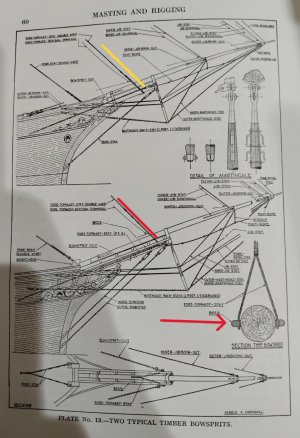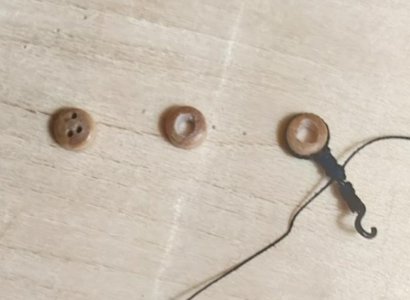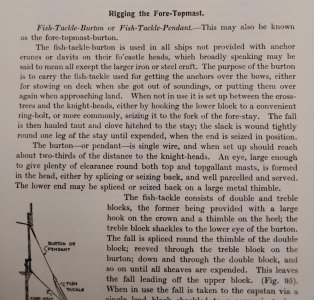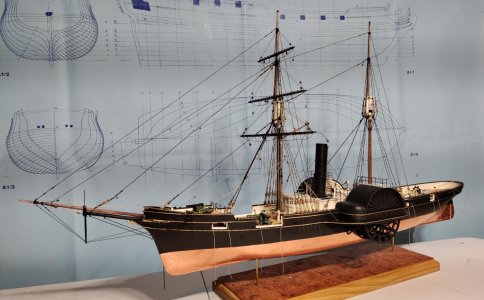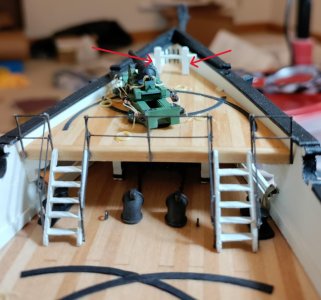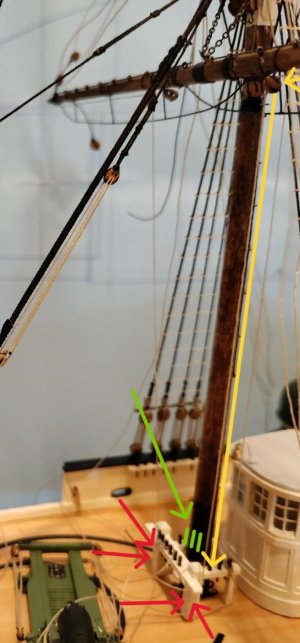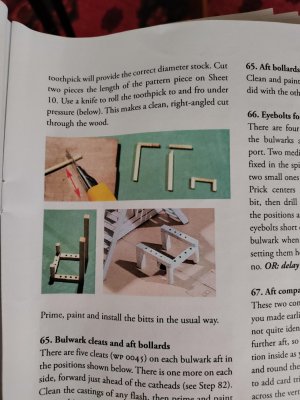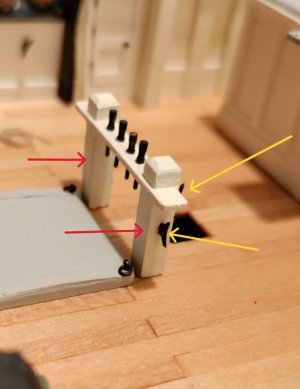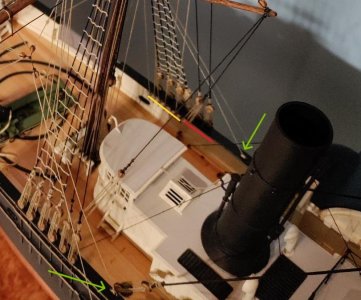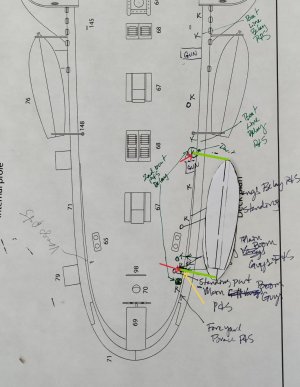Shipmates! Thank you for sticking with me throughout this build and for you emojis of approbation!
Pete! Glad it's not just me

On the other hand, I don't want poor Murphy to take all the blame here. In my case, the problem was underestimation because I didn't fully think through just how many belaying points I needed. Again, planning and planning in advance.
I had in mind doing all of the things I did on the foremast and the things I will do on the main mast, but I didn't have those things in mind when I started the build. Consequently, I was adding the belaying points late. Taking the bitts from forward aft - the foremost bitts came to mind after I built the raised deck and thought about the need to belay the jib stay inhaul and outhaul lines. I also thought, in a very fuzzy way, about the head sail running lines to the jib stay and the maintop mast stay. What I did not foresee was how hard it was going to be to actually belay the lines given the size and location of the fore bitts.
If I were to do it again, I would add cleats to the sides of the bitts for the jib stay in and outhaul lines. See red arrows in pic below.
View attachment 501728
For the foremast bitts, I should have done the same thing. Part of the problem was having the bitts close enough to the mast so that the bitts didn't seem to intrude into the space for the gun. So, with the spatial relationships in mind, I did not make the bitts wider or longer so accommodate more belaying pins and ease of belaying the lines for that matter. Not having enough space for pins the necessary pins, cleats the port and starboard and on the forward side of the bitts would have been useful for belaying the lines from the upper ends of the running rigging for the jib stay and foremast stay and the sheets. Red arrows for additional cleats. Yellow arrow for the track of the sheets. Another solution would have been the addition of cleats to the mast. Cleats on the aft side of the mast would have been nearly impossible to rig (IMHO), BUT at least 270 degrees of the mast from a point on the port side to an identical point on the starboard side could have been used for cleats and spared the use of the belaying pins so that no line shared a pin with another line. See green notations and arrow.
View attachment 501731
Why I should have known better. Below is my running rigging plan for the foremast. I should have created this plan in writing before I started work on the masts. I didn't create the plan until after the the fore bitts were done and the foremast was finished. Now, the right way to have done it was additional pins in a spider band around the mast. I thought about this, but I couldn't figure out how to make the spider band with my stone age tools and lack of experience with creating parts from brass and soldering them together. Almost embarrassing now when I think about Paul's work
@dockattner and the fantastically delicate work of
@shipbuilder . I have no real excuse for not going with cleats instead of a spider band. In any event, just based on my rigging plan, I needed 16 points to belay all of the lines that run down from the yards on the foremast. As built, my fore bitts only have 14 belaying pins and 4 of those are not functional because of how thick I built the attachment points from the bitts to the legs that run aft. So, I was 6 belaying pins short in the end.
View attachment 501736
As to to the mainmast bitts, I was slightly thoughtful. I added cleats, but I didn't follow the plans which call for a configuration of the bitts identical to the foremast bitts. So, I lost 8 belaying pins. I did it my own way so that I could more easily access the bolts on deck for attaching the lower blocks for the main boom and main gaff halliards. I lost the most convenient belaying points for the topsail and t'gallant sail yard braces. First pic is what the kit says to do. Second pic, what I did. Yellow arrows show the added cleats. Red arrow shows where I should have added an additional cleats. Also, I could have added cleats to the mast as discussed above. On the main mast, the cleats could have been placed on the forward side of the mast an made easy attachment points for the brace lines. See pic 3 in green. Orange arrows point out the deck eyebolts I was trying to maintain easy access to. As you can see, there is plenty of room between the main mast and the ladders to the top of the deckhouse to manage belaying the braces.
View attachment 501737View attachment 501738View attachment 501741
That's all for now, shipmates!
Blessings. Peace. Gratitude.
Chuck



